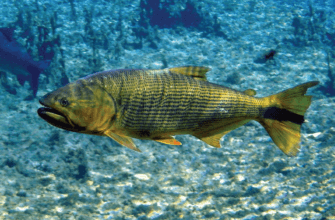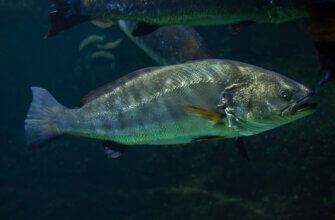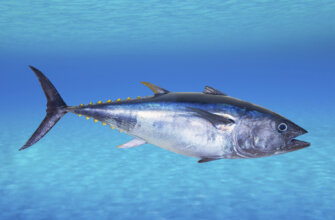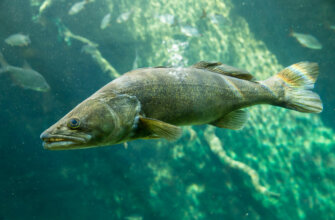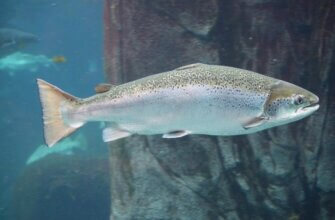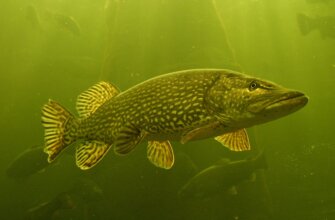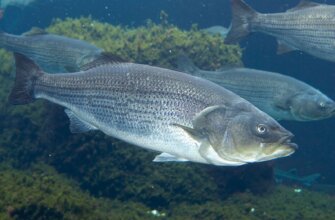Catfish is a type of fish that belongs to the order Siluriformes. There are over 3,000 species of catfish found in freshwater and saltwater environments all over the world. Catfish are typically bottom-dwelling fish and are known for their distinctive barbels, which are fleshy, whisker-like projections around their mouths that are used to help them find food.
Catfish are known for their voracious appetites and will eat just about anything they can catch or scavenge, including insects, small fish, crustaceans, and even plant material. They are also an important food source for humans in many parts of the world and are often farmed for their meat.
Catfish are an important food source for humans in many parts of the world and are also popular with anglers as a sport fish. They are known for their mild, white flesh and are often used in dishes such as fish tacos, catfish po’ boys, and fish and chips.
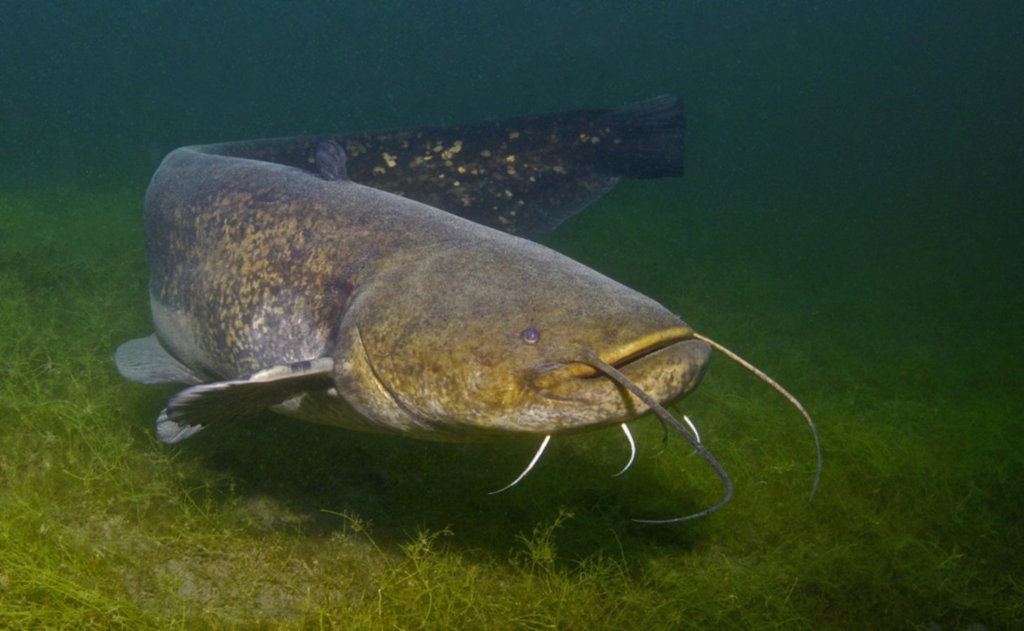
In addition to being a popular food fish, catfish are also important ecologically. They help to control populations of other fish and aquatic invertebrates and are an important part of the food chain in many aquatic ecosystems.
Catfish come in many different sizes, with some species growing to be several feet long and weighing over 100 pounds. They can be found in a variety of habitats, from shallow streams and ponds to deep rivers and oceanic trenches.
Some species of catfish are popular in the aquarium trade due to their unique appearance and hardy nature. However, it is important to note that some species can grow quite large and require specialized care.
Species
There are over 3,000 species of catfish, so it is difficult to provide an exhaustive list of all of them. However, here are some of the most common and well-known species:
- Channel Catfish (Ictalurus punctatus): This is one of the most popular species of catfish in North America, prized for its tasty flesh. It is typically found in rivers and streams and can grow up to 1.5 meters (5 feet) in length.
- Blue Catfish (Ictalurus furcatus): Another popular species in North America, the blue catfish is known for its large size and fighting ability. It can grow up to 1.8 meters (6 feet) in length and weigh over 68 kilograms (150 pounds).
- Flathead Catfish (Pylodictis olivaris): This species is also native to North America and is known for its large, flat head and predatory behavior. It can grow up to 1.5 meters (5 feet) in length and weigh over 45 kilograms (100 pounds).
- Asian Catfish (Pangasianodon hypophthalmus): This species is native to Southeast Asia and is an important food fish in the region. It can grow up to 3 meters (10 feet) in length and weigh over 300 kilograms (660 pounds).
- Walking Catfish (Clarias batrachus): This species is native to Southeast Asia and is known for its ability to “walk” on land using its pectoral fins. It is an invasive species in many parts of the world and can cause ecological damage.
- Electric Catfish (Malapterurus electricus): This species is found in Africa and is known for its ability to generate electric shocks, which it uses to stun prey and defend itself.
- Redtail Catfish (Phractocephalus hemioliopterus): This species is native to South America and is popular in the aquarium trade due to its striking red tail fin. It can grow up to 1.5 meters (5 feet) in length.
- The Wels Catfish, also known as the European catfish, is one of the largest freshwater fish species found in Europe. It is a predatory fish that can grow up to 5 meters in length and weigh over 300 kg (660 lbs). Wels catfish are native to Eastern Europe and are widely distributed in rivers and lakes throughout the continent, including the Danube, Po, Rhine, and Ebro rivers.
These are just a few examples of the many species of catfish that exist around the world. Each species has its own unique characteristics and behaviors, making them fascinating to study and observe.
Appearance
Catfish are a diverse group of fish, and their appearance can vary widely depending on the species. However, there are some general characteristics that are common to many catfish:
- Whiskers: Most catfish have whiskers or barbels on their face, which they use to locate food in dark or murky waters.
- Scales: Many catfish have scales, although some species have smooth skin.
- Flat or rounded head: Many catfish have a flat or rounded head, which helps them root around on the bottom of the water for food.
- Spines: Some catfish have spines on their fins or back, which they can use for defense.
- Coloration: Catfish come in a variety of colors and patterns, ranging from dull brown or gray to brightly colored with stripes or spots.
- Body shape: Catfish can have a wide range of body shapes, from long and slender to short and stout.
- Size: Catfish come in a variety of sizes, ranging from just a few inches long to over 10 feet long in the case of some species.
Catfish are a fascinating group of fish with a wide range of appearances. Their unique features, such as their whiskers and spines, make them well-suited to their aquatic environments and fascinating to observe.
Size and weight
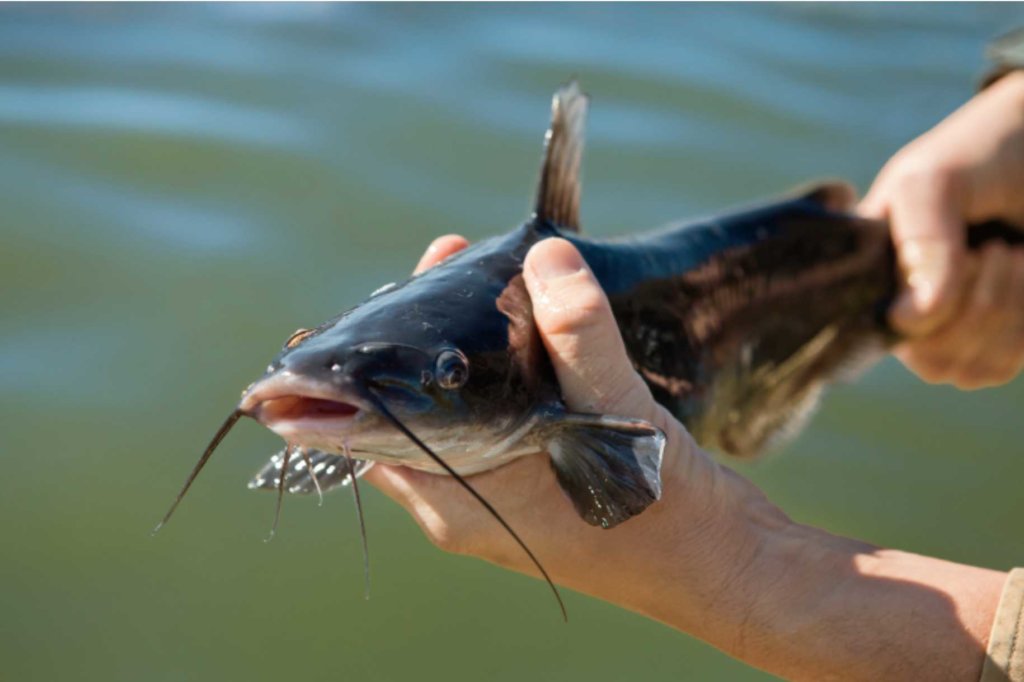
Catfish vary in size and weight depending on the species. Some species are relatively small and weigh only a few ounces, while others can grow to be quite large and weigh hundreds of pounds. Here are some examples of catfish and their typical size and weight:
- Corydoras Catfish: These small catfish are popular in the aquarium trade and typically grow to be 2-3 inches in length and weigh just a few grams.
- Bronze Corydoras Catfish: Another popular aquarium species, these catfish can grow to be 2.5-3 inches in length and weigh up to 20 grams.
- Bristlenose Catfish: These catfish are known for their distinctive “whiskers” and typically grow to be 3-5 inches in length and weigh up to 50 grams.
- Channel Catfish: One of the most popular food fish in North America, channel catfish can grow to be 3-4 feet in length and weigh up to 50 pounds (23 kg).
- Mekong Giant Catfish: This is one of the largest species of catfish in the world, and can grow to be over 10 feet in length and weigh over 600 pounds (270 kg).
- Blue Catfish: Another large species found in North America, blue catfish can grow to be over 5 feet in length and weigh over 100 pounds (45 kg).
- Redtail Catfish: This species, native to South America, can grow to be over 4 feet in length and weigh up to 100 pounds (45 kg).
Overall, the size and weight of catfish vary widely depending on the species. Some are relatively small and suitable for aquariums, while others are large and sought after by anglers or fish farmers. It is important to research the specific size and weight requirements of the species you are interested in to ensure that you can provide appropriate care.
Diet
Catfish are omnivores, which means that they eat a variety of foods including plants, insects, crustaceans, and small fish. The exact diet of a catfish will vary depending on the species and the environment they live in, but here are some common foods that catfish eat:
- Insects: Many species of catfish eat insects and other small invertebrates, such as worms or snails.
- Plants: Some species of catfish will eat plant matter, such as algae or other aquatic plants.
- Crustaceans: Some species of catfish, particularly those that live in freshwater, will eat crustaceans such as crayfish or shrimp.
- Small fish: Larger species of catfish will eat small fish, such as minnows or other baitfish.
- Dead organic matter: Some species of catfish will scavenge for dead organic matter, such as decaying plants or animals.
Diet of a catfish can be quite diverse and will depend on a number of factors such as the species, the size of the fish, and the availability of food sources in the environment. It is important to research the specific dietary requirements of any catfish species you are keeping to ensure that you are providing them with appropriate nutrition.
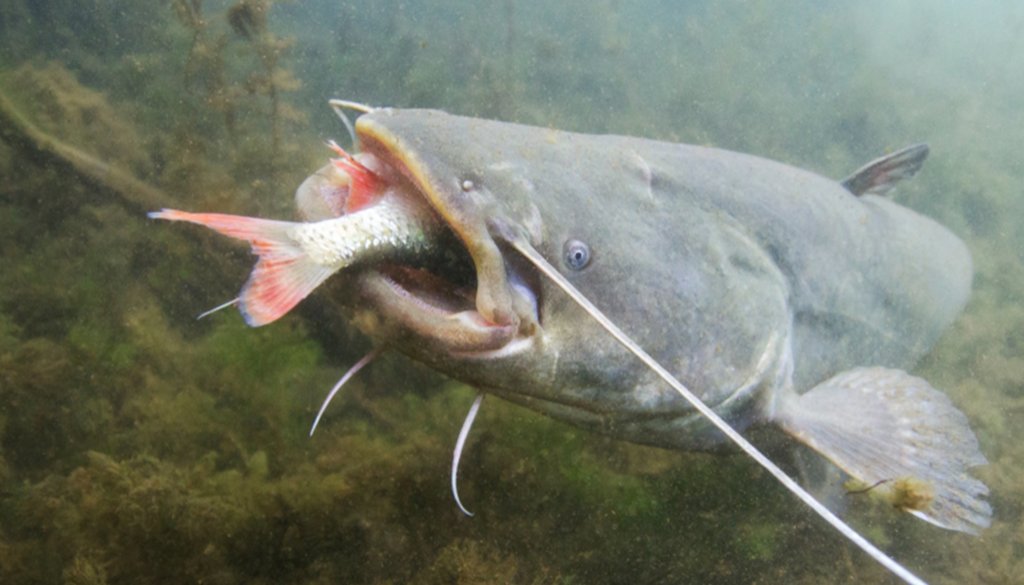
Behavior
Catfish behavior can vary widely depending on the species and the environment they live in. However, there are some general behavioral traits that are common to many catfish:
- Nocturnal: Many species of catfish are nocturnal, meaning that they are most active at night. This behavior helps them avoid predators and hunt for food in low-light conditions.
- Bottom dwellers: Most catfish are bottom dwellers, meaning that they spend most of their time on or near the bottom of the water. This behavior allows them to feed on a variety of prey that live on the bottom, such as worms, crustaceans, and small fish.
- Social behavior: Some species of catfish are social and will form schools or groups. This behavior can help protect them from predators and make it easier to find food.
- Aggressive behavior: Some species of catfish are aggressive and territorial, particularly during breeding season. Male catfish may fight with each other for access to females or for territory.
- Burrowing: Some species of catfish will burrow into the substrate or create nests for breeding purposes. This behavior can help protect their young from predators.
Spawning
Spawning, or reproduction, in catfish can vary depending on the species and the environment they live in. However, there are some general patterns and behaviors that are common to many catfish during spawning:
- Seasonal breeding: Many species of catfish have a specific breeding season, which is often triggered by changes in water temperature and daylight hours.
- Courtship behavior: Male catfish will often exhibit courtship behavior, such as chasing and nudging females or creating nests for the eggs to be deposited in.
- Nest building: Some species of catfish will build nests or burrows in the substrate for the female to lay her eggs in.
- External fertilization: Catfish generally practice external fertilization, meaning that the female will lay her eggs and the male will then fertilize them with his sperm.
- Parental care: Some species of catfish will exhibit parental care, meaning that the male or both parents will guard the eggs and young after they are laid.
- Hatching and growth: Catfish eggs typically hatch within a few days to a few weeks, depending on the species and environmental conditions. The young catfish will then grow and develop in the protection of the nest or under the care of their parents.
Fishing
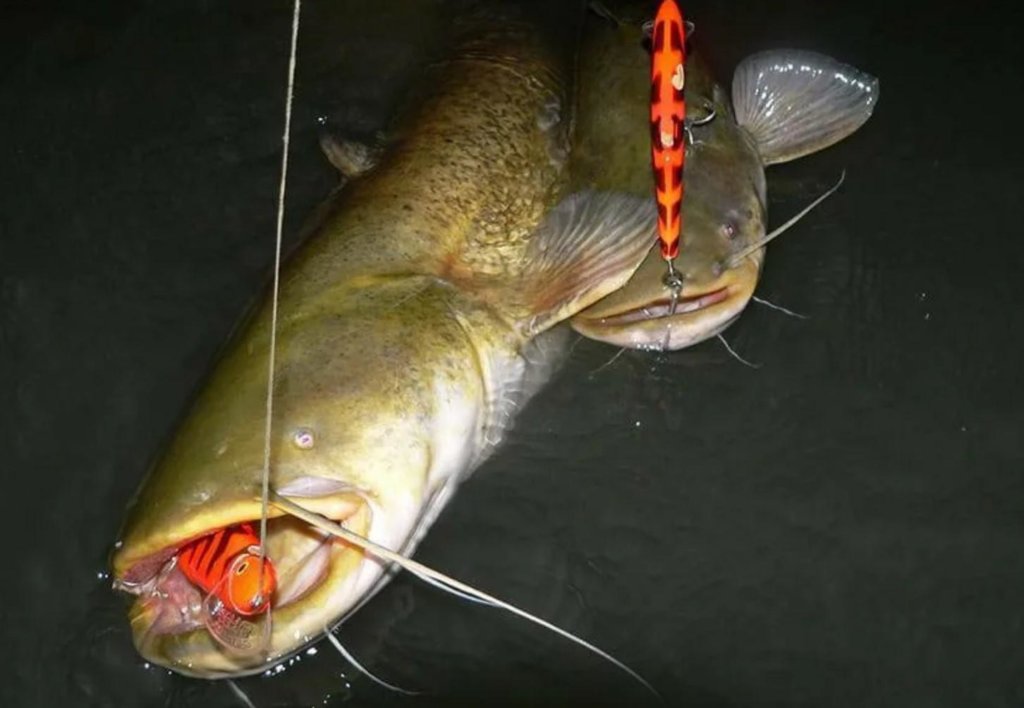
Catfish are found in a variety of freshwater habitats such as rivers, lakes, and ponds. They prefer areas with structure, such as logs, rocks, or deep holes where they can hide and ambush prey. Look for areas with slow-moving or still water, as catfish are less active in fast-moving currents.
Fishing for catfish is a popular activity among anglers, and there are a number of techniques that can be used to catch these fish. Here are some common methods for fishing for catfish:
- Bottom fishing: Catfish are bottom-dwelling fish, so fishing on or near the bottom is often the most effective method. This can be done with a variety of baits and rigs, such as a sinker and hook with bait or a slip bobber rig.
- Jug fishing: Jug fishing involves setting out several jugs or floats with lines and bait attached, and allowing them to drift with the current. When a catfish takes the bait, the jug will start to move, signaling that a fish has been caught.
- Trotline fishing: Trotlines are long lines with multiple hooks and bait attached, which are set across a body of water. When a catfish takes the bait, it will be hooked on one of the hooks along the line.
- Noodle fishing: Noodle fishing involves using a long, flexible rod, often made from PVC pipe, with a line and bait attached. The noodle is allowed to float on the water, and when a catfish takes the bait, the noodle will bend and move, signaling that a fish has been caught.
- Fly fishing: While not as common as other methods, fly fishing for catfish can be a fun and challenging way to catch these fish. Streamers and other large, weighted flies can be used to entice catfish to bite.
When fishing for catfish, it is important to use the right gear and bait for the species and environment you are fishing in. Catfish can be caught using a variety of baits, including worms, shrimp, chicken liver, and stink bait. Researching the specific habits and behaviors of the species of catfish you are targeting can also help increase your chances of success.
Lures
While bait is often the go-to option for catfish anglers, lures can also be effective in catching these fish. Here are some common types of lures used for catfish fishing:
- Jigs: Jigs are versatile lures that can be used for a variety of fishing styles, including for catfish. They can be tipped with bait to make them even more enticing to catfish.
- Soft plastics: Soft plastic lures, such as worms and grubs, can be rigged in a variety of ways to imitate the movement and appearance of natural prey.
- Spinnerbaits: Spinnerbaits are lures that have a metal blade that spins when retrieved through the water. The vibration and flash of the blade can attract catfish and entice them to bite.
- Crankbaits: Crankbaits are lures that have a diving lip that causes them to dive down into the water when retrieved. They can be effective for catching catfish that are holding in deeper water.
- Topwater lures: Topwater lures, such as buzzbaits and poppers, can be effective for catching catfish that are feeding near the surface of the water.
When selecting a lure for catfish fishing, it is important to consider the species of catfish you are targeting, as well as the water conditions and the behavior of the fish. Additionally, it is important to use a rod and reel that is appropriate for the size of the lure and the weight of the fish you are targeting.
For examples of fishing lures for catfish, along with their models and brand names:
- Santee Cooper Catfish Rig: This rig is designed for drift fishing or trolling for catfish, and consists of a sliding sinker and two hooks. It’s effective for catching both channel and blue catfish. Brand: Eagle Claw.
- Whisker Seeker Tackle Catfish Lure: This lure is designed to imitate the natural prey of catfish, and is effective for catching both channel and flathead catfish. It comes in a variety of colors and sizes, and is made of durable materials. Brand: Whisker Seeker Tackle.
- Berkley PowerBait Catfish Chunks: These are pre-cut chunks of bait that are designed to stay on the hook longer, making them more attractive to catfish. They come in a variety of flavors, including chicken liver and blood. Brand: Berkley.
- Yum F2 Wooly Bullee: This lure is designed to resemble a small baitfish, and is effective for catching both channel and flathead catfish. It’s made of durable materials and comes in a variety of colors. Brand: Yum.
- Team Catfish Sudden Impact Fiber Bait: This bait is designed to release a strong scent that attracts catfish, and is made of fiber strands that make it easier to stay on the hook. It comes in a variety of scents, including blood and garlic. Brand: Team Catfish.
Baits
There are many types of baits that can be used for catfish fishing, and the best choice will depend on the species of catfish you are targeting, the time of year, and the fishing conditions. Here are some popular options:
- Worms: Nightcrawlers and red wigglers are popular choices for catfish bait. They can be fished on a hook alone or combined with other baits.
- Chicken liver: Chicken liver is a common catfish bait because it has a strong scent and is easy to obtain. It is best to use a treble hook to keep the liver in place.
- Stink bait: Stink bait is a pre-made catfish bait that comes in a variety of flavors. It is made with a strong-smelling base like cheese or garlic and can be effective for attracting catfish.
- Shrimp: Fresh or frozen shrimp can be used as catfish bait. They can be fished on a hook alone or combined with other baits.
- Cut bait: Cut bait refers to any type of fish that has been cut into pieces and used as bait. Common choices include shad, herring, and skipjack.
- Dough bait: Dough bait is a pre-made catfish bait that is made with flour, cornmeal, and other ingredients. It can be molded onto a hook and is often used in combination with other baits.
Remember to check your local fishing regulations and use bait that is legal in your area.
There are many different types of baits that can be used for catfishing, and the specific brand and name will depend on personal preference and fishing conditions. Here are some examples:
- Gulp! Catfish Dough – This is a soft bait that is infused with powerful scents that catfish are known to be attracted to. It comes in a variety of flavors, including blood, liver, and chicken liver. The Gulp! brand is manufactured by Berkley and is widely available at fishing supply stores.
- Team Catfish Fiber Nuggets – These are bite-sized chunks of bait that are made from a blend of natural fibers and scents. They come in several flavors, including Sudden Impact and Jack’s Juice, and are designed to slowly dissolve in the water to create a scent trail that leads catfish to your hook.
- Magic Bait Catfish Bait – Magic Bait is a brand that specializes in catfish bait, and they offer several different options depending on your preferences. Their chicken liver bait is a popular choice, as is their shrimp flavor. They also offer pre-rigged bait balls that are easy to use and can be effective in attracting catfish.
- Strike King Mr. Catfish Chunk Bait – This is a chunky bait that is made from a blend of proteins, amino acids, and other scents that are designed to attract catfish. It comes in several flavors, including blood and liver, and is sold in a resealable container that makes it easy to store and transport.
- Uncle Josh Catfish Baits – Uncle Josh is another brand that specializes in catfish bait, and they offer several different options for anglers. Their Dip-N-Glow bait is a popular choice, as it is designed to attract catfish with both scent and visual appeal. They also offer a variety of soft baits, such as the Little Stinker and the Big Stinker, which are made with powerful scents and flavors.
It’s important to note that different types of bait may be more effective depending on the time of year, water temperature, and other factors. It’s a good idea to experiment with different baits and brands to see what works best for your local fishing conditions.
Rods
Choosing the right rod for catfish fishing is important for both casting accuracy and fish fighting power. Here are some factors to consider when selecting a catfish rod:
- Power: The power of a rod refers to its strength and ability to handle heavy fish. Catfish are often large and powerful fish, so a medium-heavy to heavy power rod is recommended.
- Action: The action of a rod refers to how much the rod bends when pressure is applied to the tip. For catfish fishing, a moderate to fast action is recommended, as this will allow for good sensitivity and hook-setting power.
- Length: The length of a rod can impact casting distance and accuracy, as well as the ability to fight and control a fish. For catfish fishing, a rod between 7 and 8 feet in length is recommended.
- Material: Rods can be made from a variety of materials, including graphite, fiberglass, and composite blends. Graphite rods are often preferred for catfish fishing due to their sensitivity and strength.
- Handle: The handle of a rod can impact comfort and grip when fishing. For catfish fishing, a cork or foam handle is recommended, as they provide a comfortable grip and good control.
When selecting a catfish rod, it is important to consider the size and species of catfish you are targeting, as well as the water conditions and fishing technique you will be using. A well-chosen rod can make all the difference in landing a big catfish.
Some examples best fishing rods for catfish, along with their models and brand names:
- Ugly Stik Catfish Casting Rod: This rod is designed specifically for catfish fishing, with a powerful yet sensitive construction that can handle big catfish. It comes in lengths of 7′ to 8′, with medium-heavy to heavy power ratings.
- Abu Garcia Catfish Commando Fishing Rod: This rod is designed for targeting big catfish, with a heavy-duty construction that can handle heavy lines and large baits. It comes in lengths of 7′ to 8′, with medium-heavy to heavy power ratings.
- Okuma Battle Cat Catfish Spinning Rod: This rod is designed for targeting big catfish with spinning reels, with a powerful construction that can handle heavy lines and large baits. It comes in lengths of 7′ to 10′, with medium-heavy to heavy power ratings.
- Berkley Cherrywood HD Casting Rod: This rod is a more affordable option for catfish anglers, with a durable construction that can handle medium to large catfish. It comes in lengths of 7′ to 8′, with medium to heavy power ratings.
- B’n’M Silver Cat Magnum Casting Rod: This rod is designed specifically for targeting big catfish with heavy lines and large baits. It comes in lengths of 7′ to 8′, with heavy power ratings.
Dishes
Catfish is a type of freshwater fish that is popular for its firm, white flesh and mild flavor. It is a common ingredient in many Southern and Cajun dishes in the United States, but is also enjoyed in other parts of the world.
Here are some details about catfish dishes:
Fried catfish: This is perhaps the most popular way to prepare catfish in the Southern United States. The fish is usually coated in a seasoned cornmeal mixture and deep-fried until crispy and golden brown. It is often served with hushpuppies (deep-fried balls of cornmeal batter), coleslaw, and tartar sauce.
Grilled or blackened catfish: Grilling or blackening catfish is another popular cooking method. The fish is seasoned with a spicy rub or marinade and then grilled or seared until cooked through. It is often served with rice, beans, and a side of greens.
Catfish stew: Catfish is also a common ingredient in stews, particularly in African-American cuisine. The fish is simmered in a flavorful broth with vegetables, such as okra, tomatoes, and onions, and served over rice or with cornbread.
Catfish po’ boy: This is a sandwich that originated in Louisiana and typically consists of fried catfish, lettuce, tomato, and a spicy remoulade sauce on a crusty baguette.
Catfish etouffee: This is a classic Cajun dish made with a roux-based sauce, vegetables, and catfish. The fish is cooked in the sauce until it is tender and infused with flavor, and then served over rice.

